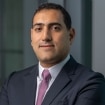Executive summary
Real estate megaprojects are an effective tool for promoting growth and economic diversification. We estimate that Gulf Cooperation Council (GCC) countries have planned almost one trillion U.S. dollars of investment in megaprojects, as they look to transform economically and socially.
Projects running into the tens of billions of dollars always involve risk. The GCC’s real estate megaprojects are no exception. These projects face significant challenges, starting with their inherent complexity. They also have to overcome home-country barriers, from outmoded regulations to inefficient institutions.
A key enabler of any successful megaproject is having the right institutional setup, with clearly defined relationships among all stakeholders (e.g., the project sponsor, market regulators, property developers, asset managers, and city services providers). These stakeholders must cooperate for megaprojects to succeed. Yet in far too many cases, the initial discussions surrounding GCC megaprojects have been about the concept, the development plan, and the funding — leaving the institutional setup as an afterthought. Defining the institutional setup earlier makes a tremendous contribution to project success.
The $1 trillion challenge
For years, real estate megaprojects have been part of GCC countries’ efforts to diversify their economies away from oil and gas. In the 1970s, Saudi Arabia used megaprojects to transform Yanbu and Jubail into industrial port cities.
There are close to 30 real estate megaprojects in the GCC as of early 2020, representing as much as US$1 trillion in investment, according to our calculations. As these projects become operational over the next decade, they will help revitalize GCC economies, creating significantly improved tourist attractions, entertainment venues, financial and health centers, and residential areas. The goal of these megaprojects is to find new sources of growth, become more innovative and environmentally sustainable, and provide showcases for culture, heritage, and history.
The GCC’s real estate megaprojects take two fundamentally different forms. Some are greenfield projects set on large swaths of vacant land with the goal of creating completely new communities or providing new offerings. Examples include Al Harir City in Kuwait, Lusail City in Qatar, the Red Sea project and NEOM in Saudi Arabia, and the Riyadh City project in Abu Dhabi in the United Arab Emirates (UAE). Others are regeneration projects focused on reviving and restoring existing assets and communities, such as Muharraq in Bahrain, and in Saudi Arabia the downtowns of Jeddah and the capital, Riyadh.
Although these projects vary widely in their scope and vision, they are alike in their soaring ambition and daunting levels of complexity.
Too often, the project sponsors make the cardinal errors of either delaying decisions about the institutional setup until a later stage, or they choose models that are incompatible with the overall purpose of the development. They prefer to focus initially on the master plan, on the development approach, and on the funding. Instead, the project sponsors should think of the institutional setup near the beginning of the megaproject, along with the fundamental concept behind the development.2 The institutional process is crucial and takes time to get right.
"Too often, the project sponsors make the cardinal errors of either delaying decisions about the institutional setup until a later stage, or they choose models that are incompatible with the overall purpose of the development."
Conclusion
Deciding on the institutional setup and structure of the delivery entity is critical in real estate megaprojects. There are many trade-offs to make in defining the interaction of the different ecosystem players and in operating within the legal-regulatory framework of the jurisdiction where the megaproject is developing. Moreover, the design of the institutional setup and delivery entity structure are tightly connected to the project master plan, development
approach, and funding approach.
For all of these reasons, it is best to think about the institutional setup early, and coordinate it with other aspects of the project. It is a change in sequencing that can make all the difference to the success of the project.
Contact us
















Menu